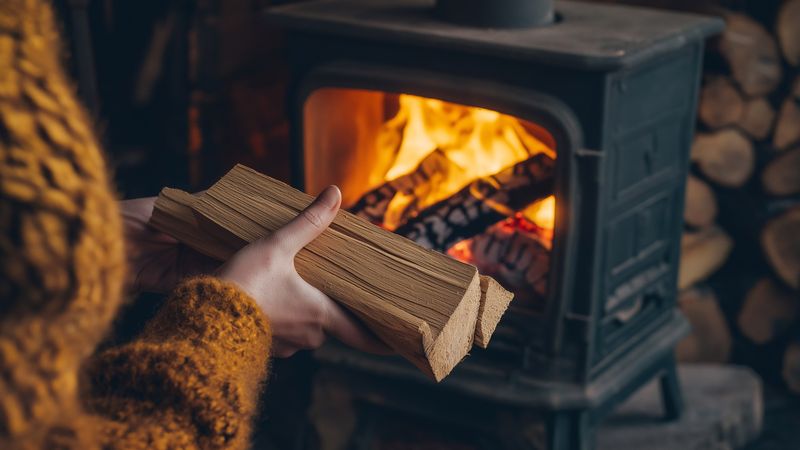For some, the warm glow of an open fire or wood burner has become the ultimate in cosy home style; others see it as a cheaper and greener form of heating.
But domestic burning comes with costs and is the single biggest source of small particle air pollution in the UK.
We tend to think of air pollution as a risk faced outside. But indoor air can also be polluted, including by these tiny toxic particles in smoke.
Wherever we breathe them in, they can affect our heart and blood vessels and cause a range of conditions – from asthma, heart and lung disease to diabetes and dementia.
Children, older people and people with lung and heart conditions, such as high blood pressure, are particularly at risk from poor air quality in the home and outside.
If you do use a wood burner, or wood-fuelled fire, make sure you:
Find out more about reducing the negative impact your stove or open fire can have on health by visiting Defra’s UK-Air website.

“Making small changes to how you burn will cut the amount of pollution produced, which is better for health, wallets and the planet”
KCC Director of Public Health, Dr Anjan Ghosh, said: "Wood-burning stoves have become a popular way to heat homes. But as well as being around 15% more expensive than other forms of heating, and damaging for the environment, the tiny particles in smoke can harm our health.
“Breathing in this fine particulate matter increases the risk of heart and lung disease. It can also affect brain health and baby development.
“Making small changes to how you burn will cut the amount of pollution produced, which is better for health, wallets and the planet.”
If you are struggling to heat your home this winter visit www.kent.gov.uk/cost-of-living-support/household-energy/support-to-reduce-your-energy-bills for advice and support.

“Clean Air Night is an opportunity to learn about the hidden costs of wood burning and ways to reduce everyone’s exposure”
Kent County Council Cabinet Member for Public Health and Adult Social Care, Dan Watkins, said: “You might not be able to see wood smoke. But on cold, dark nights you can smell it as it lingers and seeps into homes affecting indoor as well as outdoor air quality.
“Clean Air Night is an opportunity to learn about the hidden costs of wood burning and ways to reduce everyone’s exposure.”
Do you live with asthma, heart and other lung conditions? Kent Air’s air quality alerts let you know when areas are experiencing poor air quality – and when to avoid doing intense outdoor exercise.
The forecasts also indicate when you are likely to need higher levels of symptom-relieving medication. Find out more by visiting the Kent and Medway Air Quality Partnership’s Kent Air website and sign up here.
Dr Faye Hinsley, a GP and NHS Kent and Medway Clinical Lead for Children and Young People, added: “Indoor and outdoor air pollution can trigger asthma symptoms, making it harder for people with asthma to breathe.
“It's important to identify possible asthma triggers for children by making a note of where they are and what they're doing when symptoms get worse. Some triggers can be hard to avoid, like cold weather, but it may be possible to avoid others. Activities that impact on indoor air quality include smoking, spraying chemicals and burning solid fuels.
“There is no cure for asthma, but there are lifestyle changes that can help keep symptoms under control. For more information on caring for children and young people with asthma visit www.saferasthma.co.uk.”
KCC also supports Clean Air Night’s sister campaign Clean Air Day, which encourages everyone to help reduce air pollution.




